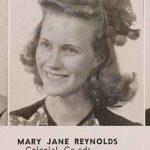 Anaheim High has lost Class of 1944 graduate Reggie (Reynolds) Massey. Her birth name was Mary Jane but this spunky lady chose to be known as Reggie. She was nearing her 91st birthday when she passed away peacefully with her family at her side.
Anaheim High has lost Class of 1944 graduate Reggie (Reynolds) Massey. Her birth name was Mary Jane but this spunky lady chose to be known as Reggie. She was nearing her 91st birthday when she passed away peacefully with her family at her side.
Reggie helped launch the Anaheim High School Alumni Association (AHSAA), when she was directed in 2008 by her classmates to explore what they could do to help “Old AU.”
Cook Auditorium was identified as an area of the school that needed renovation. While a major remodel hasn’t occurred as yet, the District painted, installed new flooring and made other improvements to the historic 1,200-seat auditorium built in 1936 as a Works Progress Administration project. Architectural plans were also drawn up for a complete renovation that would improve the stage site line, upgrade equipment and restore the school’s historic Robert Morgan pipe organ.
But more importantly, this effort brought alumni back to the school and helped provide a voice for some 3000 students.

Another of Reggie’s efforts focused on the importance of obtaining the block of buildings on Lincoln Avenue next to Cook Auditorium. In 2016, the School District purchased this large parcel of land that will be used to expand the AHS campus.
Along with planning her class reunions for many years, Reggie was a champion of the high school by donating funds and materials, including hundreds of books used for the “Read Across America” program.
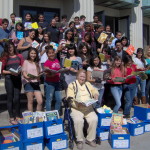
Reggie was a transplant to Southern California by way of El Dorado, Texas. More about Reggie’s life may be learned from a story about her in the Orange County Register written in 2008 by Eric Carpenter (also an AHS graduate):
“Her adult life had taken her away from Anaheim.
After high school, Reggie attended Fullerton Junior College for a few months before marrying her high-school sweetheart, Robert Massey, a career Navy man who flew fighter planes in the Pacific during World War II.
After the war, the couple moved around the country before settling on the East Coast.
That’s where Reggie first got the bug to become a leader for change. When she enrolled her son in school, she noticed there was no sidewalk leading to the school. And the lumber yard next door burned wood during the day, creating a potentially dangerous cloud that drifted toward the school.
“So I went to the mayor…And before long, they built a sidewalk and stopped burning wood,” she says. “That’s where I learned: When you see something you want changed, you have to ask.”
Reggie had five children – four boys and a girl. And the family settled in Arlington, VA where she lived for 43 years. She worked full-time as an administrative assistant for a U.S. Congressman, where she learned plenty about finding the people with the power to make change.
And she gained skills as an organizer and fundraiser there too, helping start an alternative school for students unmotivated by sitting at a desk all day.
Reggie returned to Orange County every few years to visit family, but she had no plans to move back – until Valentine’s Day 2002, when her husband died after an extended battle with Alzheimer’s disease.”

Reggie (far left in front row) with her classmates at their last reunion.
Once Reggie returned to Orange County, she immediately began contacting her Colonist classmates and helped organize several reunions.
“Reggie was a visionary! She had creative ideas that made it possible for her many friends to have a really good time together, “said classmate Gania Demaree Trotter. “Reggie’s suggestions were always different and unique! ”
Gania related this story about Reggie: “After the excitement of graduation she topped it all off by proposing she drive six of us to Laguna Beach for an overnight by the ocean. We spent the entire weekend laughing, swimming, and getting really sunburned! The memory of her inspired leadership and great friendship will remain with us always.”
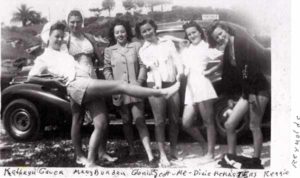
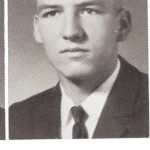 Arthur and playwright
Arthur and playwright  A bit of fun trivia has come to light with the recent death of Jerry Lewis. Did you know that Anaheim High has a connection to this comedy great through Class of 1933 graduate Marie Wilson?
A bit of fun trivia has come to light with the recent death of Jerry Lewis. Did you know that Anaheim High has a connection to this comedy great through Class of 1933 graduate Marie Wilson?

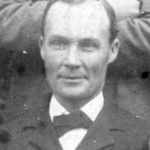
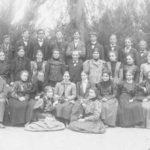
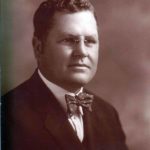 The Clayes’ family three-generational connection to Anaheim High School goes back to 1914 when Joseph A. Clayes began his tenure as a teacher of art and commerce. He became Anaheim High’s principal in the fall of 1919 and remained in that position for 22 years until his death on July 1, 1941, becoming the school’s longest serving principal.
The Clayes’ family three-generational connection to Anaheim High School goes back to 1914 when Joseph A. Clayes began his tenure as a teacher of art and commerce. He became Anaheim High’s principal in the fall of 1919 and remained in that position for 22 years until his death on July 1, 1941, becoming the school’s longest serving principal.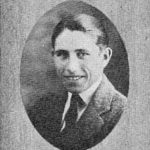

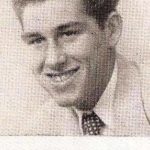
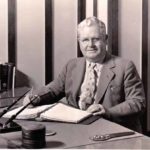 Not only was he a beloved principal, he served during a time when Anaheim High was in its formative years. His tenure included such life-changing events as World War I, the stock market crash of 1929, the 1933 Long Beach earthquake that did irreparable damage to Anaheim High, and the 1938 flood that devastated the City of Anaheim.
Not only was he a beloved principal, he served during a time when Anaheim High was in its formative years. His tenure included such life-changing events as World War I, the stock market crash of 1929, the 1933 Long Beach earthquake that did irreparable damage to Anaheim High, and the 1938 flood that devastated the City of Anaheim. Principal Clayes’ legacy lives on at Anaheim High in the form of the school logo he designed. The copyrighted logo appeared for the first time in the 1928 yearbook and was officially adopted as the Colonist symbol.
Principal Clayes’ legacy lives on at Anaheim High in the form of the school logo he designed. The copyrighted logo appeared for the first time in the 1928 yearbook and was officially adopted as the Colonist symbol.
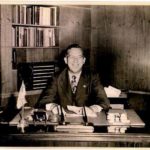
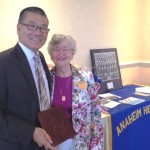
 James Miller Guinn (aka J.M. Guinn), was a prominent educator and historian in southern California during the late 19th and early 20th centuries.
James Miller Guinn (aka J.M. Guinn), was a prominent educator and historian in southern California during the late 19th and early 20th centuries.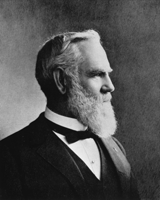 In 1881, after Anaheim schools showed marked improvement, the city of Los Angeles hired Guinn to superintend their school system. After two years in this position, Guinn shifted his vocational interests into real estate and merchandising, although he maintained a strong interest in Los Angeles’ history and educational facilities for the remainder of his life. He also served as deputy county assessor for several years.
In 1881, after Anaheim schools showed marked improvement, the city of Los Angeles hired Guinn to superintend their school system. After two years in this position, Guinn shifted his vocational interests into real estate and merchandising, although he maintained a strong interest in Los Angeles’ history and educational facilities for the remainder of his life. He also served as deputy county assessor for several years.



